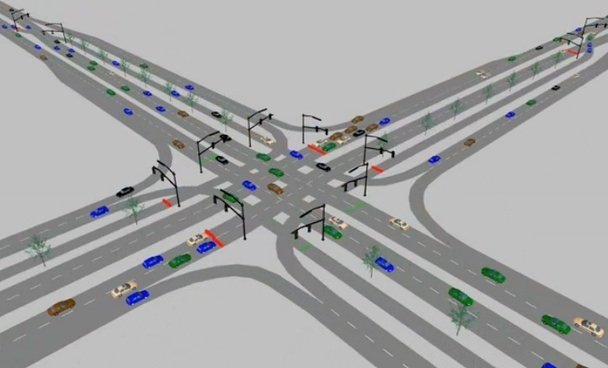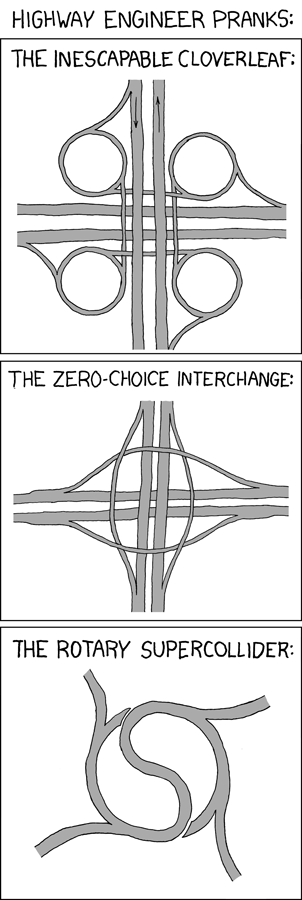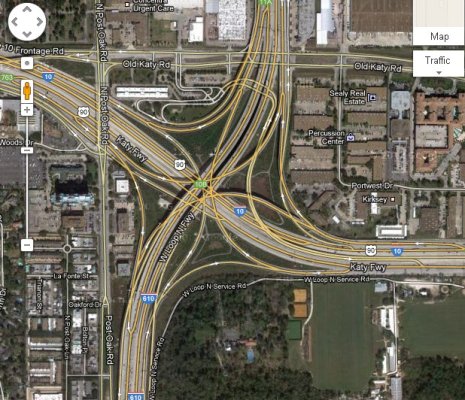Midpack
Give me a museum and I'll fill it. (Picasso) Give me a forum ...
I'm mostly going for initially reaction here, so I'd ask you to look at the picture of the new proposed intersection below before reading the article. At first I couldn't figure out how it was supposed to work just looking at the picture. 
After reading the article and watching the vids I understand, but I'm not advocating for or against. Our little town has replaced several intersections with roundabouts. It took residents a month or two to catch on to the first one, but they're a huge improvement IMO. And when I learned to drive in NJ they had "jug handle" turns, seemed silly when I was younger but not anymore.
With the scheme below you'd better know if you want to turn well in advance too. The days of deciding to turn when you get to the intersection would be over with. And if you move to a turn lane and want to go straight after all...oh my!
Could These Crazy Intersections Make Us Safer? - Commute - The Atlantic Cities

After reading the article and watching the vids I understand, but I'm not advocating for or against. Our little town has replaced several intersections with roundabouts. It took residents a month or two to catch on to the first one, but they're a huge improvement IMO. And when I learned to drive in NJ they had "jug handle" turns, seemed silly when I was younger but not anymore.
With the scheme below you'd better know if you want to turn well in advance too. The days of deciding to turn when you get to the intersection would be over with. And if you move to a turn lane and want to go straight after all...oh my!
Could These Crazy Intersections Make Us Safer? - Commute - The Atlantic Cities
Attachments
Last edited:




 but, it is not a 'real' town... only 170 people...
but, it is not a 'real' town... only 170 people...